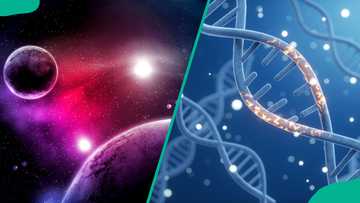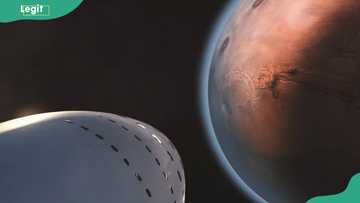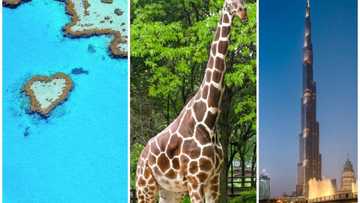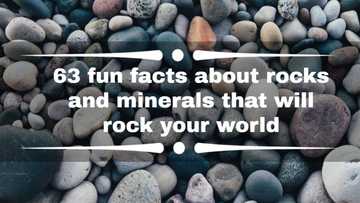Habitable planet in a new solar system: could this be true?
A few decades ago, it was unknown whether there were habitable planets outside our solar system. Recent developments in space exploration technology have shed more light on the existence of exoplanets. Statistically, every star in the galaxy is alleged to have at least one planet orbiting it. Missions such as Kepler have confirmed the presence of thousands of exoplanets with thousands more waiting to be confirmed.
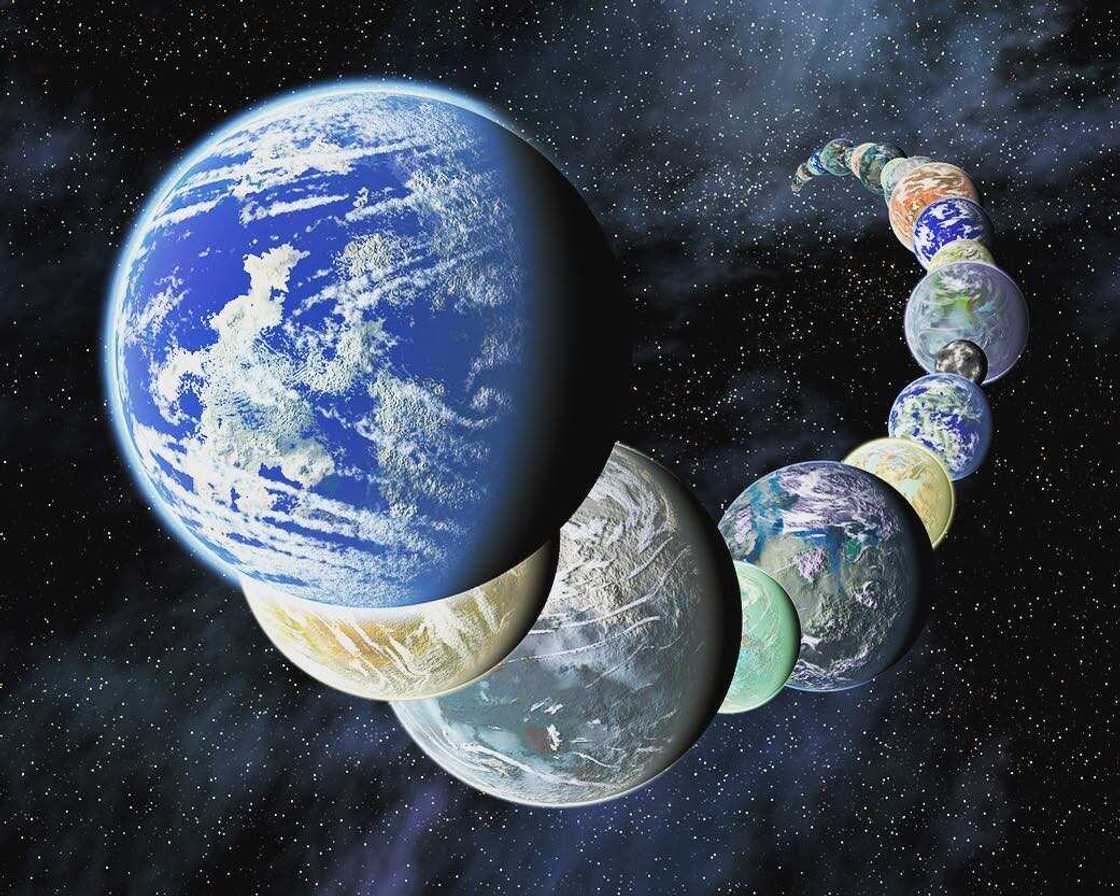
Source: UGC
Certain factors determine the habitability of a planet in a new solar system. These include the distance from a star, atmosphere, mass, temperature, and star stability. While there is no conclusive evidence about the existence of life on other planets, researchers continue to explore the possibilities. Out of more than three thousand confirmed exoplanets, only fifteen are considered potentially habitable. We take a look at planets that are most likely to support life outside our solar system.

Source: UGC
What is the Goldilocks Zone?
The Goldilocks Zone refers to the region around a star where the temperature is just right. If a celestial body is located close to a primary star, then its surface is too hot to sustain liquid water. If it is farther from the sun past the Goldilocks Zone, then any surface water will freeze. The term is derived from the classic tale of Goldilocks who chose the bowl of porridge that was neither too hot nor too cold. The concept of the habitable zone is crucial in the search for exoplanets that could potentially support life.
Kepler 186-f: Earth Similarity Index (ESI) of 0.64
Kepler 186-f was one of the new planets discovered in 2014 using the Kepler telescope. The discovery was extraordinary since it was the first one to be of similar size to Earth and exist in a habitable region. 186-f is roughly ten per cent bigger than Earth and is the fifth planet in its system. Kepler 186-f receives about thirty per cent of the sunlight that Earth gets and is thus likely much colder. There is barely any information regarding the celestial body’s atmosphere.
Research suggests that the planet’s surface is most likely rocky. Before its discovery, the most Earth-like planet was Kepler 62-f. This was, however, forty per cent larger than Earth. 186-f orbits its main star once every one hundred and thirty days. Its sun is a cool M-dwarf star which mainly emits infrared light. Any life form on the planet would have to adapt to the infrared light. The Kepler system is located five hundred light-years from Earth in the constellation of Cygnus.
186-f orbits significantly close to its star. This makes it tidal locked, a phenomenon where a planet does not rotate on its axis. This means that only one side of the planet faces its star throughout. This makes the star-facing side scorching hot and the other side cold.
Kepler 452-b: ESI of 0.83
Kepler 452-b was discovered in 2015 and is widely regarded as Earth’s close ‘cousin.’ It is 1400 light-years away and measures sixty per cent wider than Earth. Its mass is five times that of Earth, making its gravitational pulls significantly stronger. If humans were to land on 452-b, they would feel twice as heavy as they feel on Earth.
452-b is among a group of objects referred to as ‘Super-Earths.’ It orbits a star quite similar to Earth’s sun and completes an orbit in 385 days, almost identical to Earth’s 365. 452-b’s star emits ten per cent more solar energy than our sun, making it potentially hotter than Earth. One caveat with habitability on this body concerns its size. When a celestial body is significantly large, it tends to be gas-based such as Neptune and Jupiter. The size of 452-b makes it questionable in regards to potential habitability.

Source: UGC
452-b’s central star is more than a billion years older than Earth’s sun. This means it is evolving into a red star, meaning that nearby worlds might be getting too hot to live in. It is alleged that 452-b might have temperatures similar to conditions on Venus.
Proxima Centauri b: ESI of 087
Proxima Centauri b is among the potentially habitable celestial bodies closest to us. The planet is ‘only’4.2 light-years away and measures thirty per cent larger than Earth. Centauri b’s star is quite small, measuring around ten per cent of our sun. Its sun is an M-dwarf star and is prone to extreme stellar flaring. Proxima Centauri b receives around seventy per cent of the solar energy that reaches Earth. Similar to 186-f, Centauri b is tidal-locked making it potentially extreme in terms of surface temperature. It is suspected that the planet’s proximity to its star can sweep off any layers of the atmosphere.
One significant difference between Earth’s sun and the M-dwarfs is their lifespan. While Earth’s sun is gradually dying, M-dwarf stars can live for billions of years, which is a significantly long time that may allow life to evolve. The celestial body orbits along its system’s Goldilocks Zone, making it potentially habitable. Numerous studies have been conducted regarding the planet since its discovery in 2016. Much of the research suggests that the planet’s stellar flare could be too much to sustain liquid water on the planet’s surface. Other challenges for potential inhabitants would be extreme ultraviolet and x-rays.
Kepler-62f: ESI of 0.67
Kepler-62f was a new celestial body found in 2013 and is located 1,200 light-years from Earth. 62f orbits a K-dwarf star that is a billion years older than Earth’s sun and takes 267 days for one orbit. The planet is forty per cent bigger than Earth and receives about forty per cent the amount of energy that we get on Earth. Kepler-62f is most likely rocky. K-dwarf stars are significantly bigger than M-dwarf star and have a lifespan of around thirty billion years. The orbital distance of Kepler-62f is comparable to that of Venus in our solar system. It is alleged that 62f’s surface may be covered in water. However, this is only possible if the planet has a very thick atmosphere to keep the water from freezing over. Kepler-62f is the farthest planet from the star on its system.
Other notable celestial bodies in the Kepler system include Kepler-62e, Kepler-69, and Kepler-62. It is suspected that the Kepler’s celestial bodies are fully engulfed in water. This would make any potential life form on them significantly different from life on Earth. The lack of access to metallurgy, electricity, and metals implies that any type of life on the Kepler system cannot be technology-based.
TRAPPIST-1 planets
These Goldilocks planets are named after the Transiting Planets and Planetesimals Small Telescope in Chile. The seven TRAPPIST-1 planets were discovered in 2015 in the constellation Aquarius. The celestial bodies orbit a cool M-dwarf star and are located forty light-years from Earth. The planets’ main star is relatively small measuring the same size as Jupiter. Out of the seven planets, three are within their star’s habitable (Goldilocks) zone.

Source: UGC
The TRAPPIST-1 star is so cool that water can remain in liquid form on planets orbiting extremely close. The orbit paths of all seven TRAPPIST-1 planets are closer to their star than Mercury is to our sun. One unusual phenomenon on the TRAPPIST system is the short distance between planets. They are so close that if a person was standing on one of the planets, they could see geological features on the next planet. Each planet appears larger from the next planet than our view of the moon from Earth.
Similar to other planets orbiting very close to their stars, TRAPPIST-1 planets are tidal-locked. This implies that one side of each celestial body is always facing the sun while the other is perpetually facing away from the star. The unending nights on one side and days on the other could point to potentially extreme weather, including winds and dangerous temperatures.
Gliese 667Cc
Gliese 667Cc is twenty-three light-years from Earth in the constellation Scorpius. The celestial body orbits a dwarf star (Gliese 667C) which measures about a third of the Earth’s sun. The Gliese 667 system consists of three stars which would make the skies on the system’s planets have three suns. There are seven planets in the Gliese 667 system, three of which are in the habitable Goldilocks Zone. The planets orbit significantly closer to their star as compared to those in our solar system.
Gliese 667Cc takes twenty-eight days to orbit around its star and is estimated to have a mass that is four to five times that of Earth. What makes this celestial body an exciting prospect is its surface temperature. At thirty degrees Celsius, the planet has sufficient conditions to maintain the presence of liquid water. 667Cc’s distance from Earth also makes it one of the potentially habitable planets closest to Earth.
Kepler-22b: ESI of 0.9
This Goldilocks planet was the first planet confirmed by the Kepler mission to orbit in its system’s habitable zone. It is approximately six hundred light-years from Earth in the constellation Cygnus. The planet is 2.4 times the size of Earth and orbits a star that is similar in mass and size to our sun. Kepler’s star is however less bright than Earth’s sun by as much as twenty-five per cent.
Kepler 22b orbits its star at a distance of seventy-nine million miles and takes 290 days to complete an orbit. If the planet’s mass is similar to that of Earth, the gravitational pull on its surface would be more than twice what we experience on Earth. 22b has a layer of atmosphere very similar to that of Earth and scientists estimate the surface temperature on the planet to be around 22 degrees Celsius. This would allow the presence of liquid water on the planet’s surface. These conditions make 22b one of the best candidates for habitability outside the solar system.
HD 40307g: ESI of 0.79
HD 40307g is forty-two light-years from Earth in the constellation Pictor. The celestial body orbits its star at a distance of ninety million kilometres, placing it at its system’s Goldilocks Zone. The system’s main star, HD 40307, is a small, cool and orange-coloured star that is substantially less-massive than our sun. Six planets orbit this star.
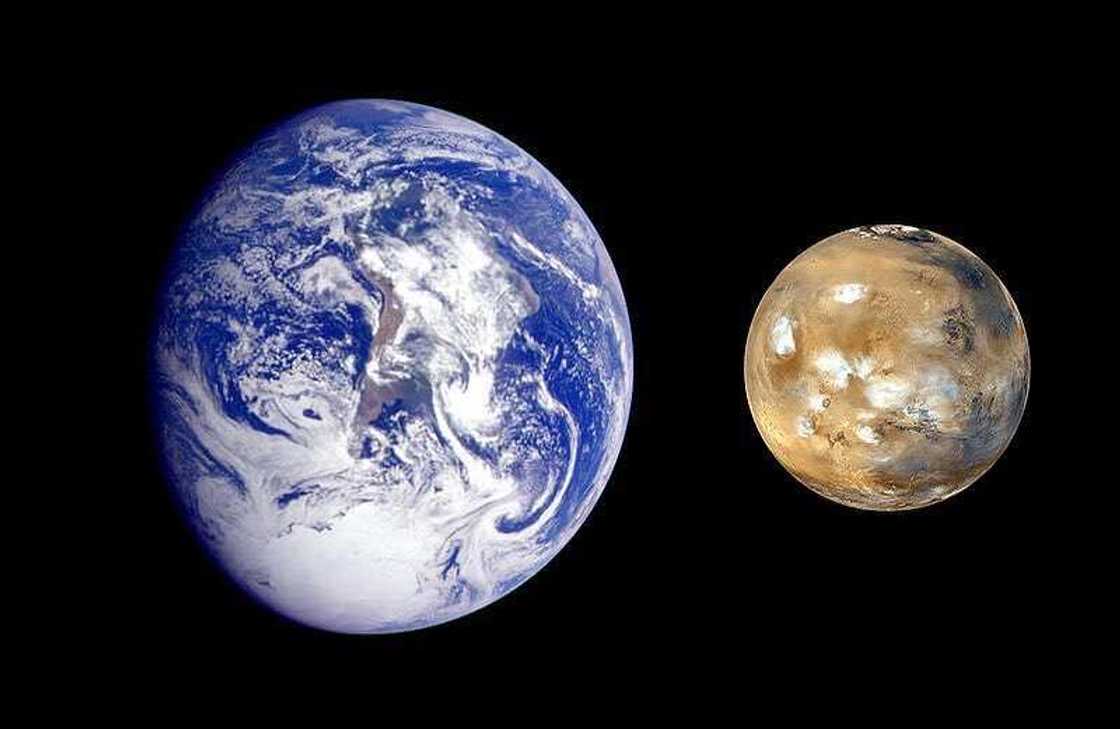
Source: UGC
The first five are too close to the star, making them scorching on the surface. HD 40307g is the sixth and farthest planet from its system’s sun, making it the best candidate for habitability in that system.
Tau Ceti e: ESI of 0.77
Tau Ceti e is a planet approximately 11.9 light-years from Earth which orbits the Tau Ceti star. It is the fourth planet in a five-planet system. Tau Ceti e is classified as a super-earth due to its potentially high mass as compared to that of Earth. Tau Ceti e was discovered in 2012 although it is yet to be confirmed.
Determining a planet’s habitability
Various aspects are considered when determining a planet’s habitability. These include:
- Earth Similarity Index (ESI): This is a characterization of how similar a planet, planetary-object, or natural satellite is to Earth. The closer an object’s ESI is to 1, the more similar its conditions are to Earth. Factors considered in determining ESI include temperature, radius, mass, and density.
- Planetary Class: The pClass is related to the thermal zone where a celestial body is located.
- Standard Primary Habitability (SPH): This is a measure of how easily vegetation can grow on a planet.
- Habitable Zone Atmosphere (HZA): HZA is a measure of how likely it is for a planet to sustain a layer of atmosphere that supports life. This is determined by a planet’s mass, radius, size, and luminosity.
- Habitable Zone Distance: This is the distance of a planet from the habitable region of its star system. Habitable planets are located within the Goldilocks Zones in their respective systems.
Properties of a habitable planet
For a planet to be deemed habitable, it must have conditions similar to those that support life on Earth. The habitable planet has certain notable characteristics:
Goldilocks (habitable) zone
For a planetary body to sustain life, it must be a comfortable distance from its central star. The Goldilocks Zone is not too hot that water would evaporate away or too cold that it would freeze. Water is widely regarded as an essential factor for life to thrive anywhere. It is not known whether life could thrive without water in alien planets. If this is possible, then the definition of habitability will change significantly.
READ ALSO: 7 Nigerian scientists you have probably never heard of
Stability of the main star
A planet’s main star must be relatively stable in terms of luminosity for it to be habitable. Some stars have severe fluctuations in their luminosity. This makes planets close to them experience extreme temperature changes, which could pose challenges to potential inhabitants.
Mass
It is assumed that for a planet to be habitable, its surface must be rocky and not gaseous. Low-mass planets have very high gravitational pull and can therefore not sustain layers of the atmosphere.
Revolution and rotation
Habitable planets should not be tidally-locked. This means that that they must rotate on their axes and orbit their parent stars. Tidal-locked bodies have perpetual days on one side and endless nights on the other, a condition that is not very friendly to life.
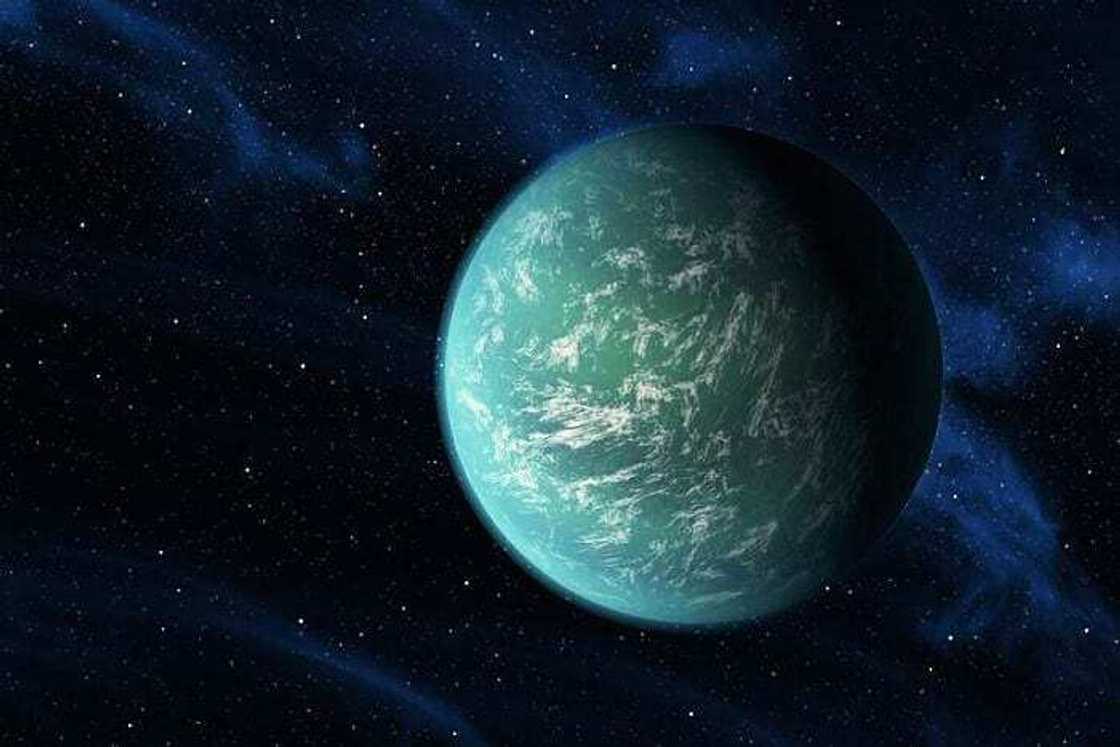
Source: UGC
Magnetic field
The core of a planet protects if from stellar flares coming from nearby stars. The molten core inside a planetary body is a source of geothermal energy and creates the necessary magnetic field. Without this field, a planet would be exposed to harmful radiation from their primary stars.
READ ALSO: Meet the Ghanaian scientist who built NASA's latest spacecraft to land on Mars (photo)
Atmosphere
Atmospheres play different roles such as temperature regulation, blocking harmful rays, and providing oxygen. Any potentially habitable celestial body must, therefore, have an atmosphere or a protective layer of gases
Is it true that there are habitable planets outside the solar system?
Currently, there is no concrete evidence regarding the existence of life elsewhere in the universe. Scientists continuously scan planetary bodies in space to determine their habitability. However, devoting resources and time to a single celestial body could prove imprudent. Researchers, therefore, analyze various factors and determine if a celestial body is ‘potentially habitable.’ We can only wait for ongoing and future research to conclusively determine whether there are indeed planets out there that can support life.
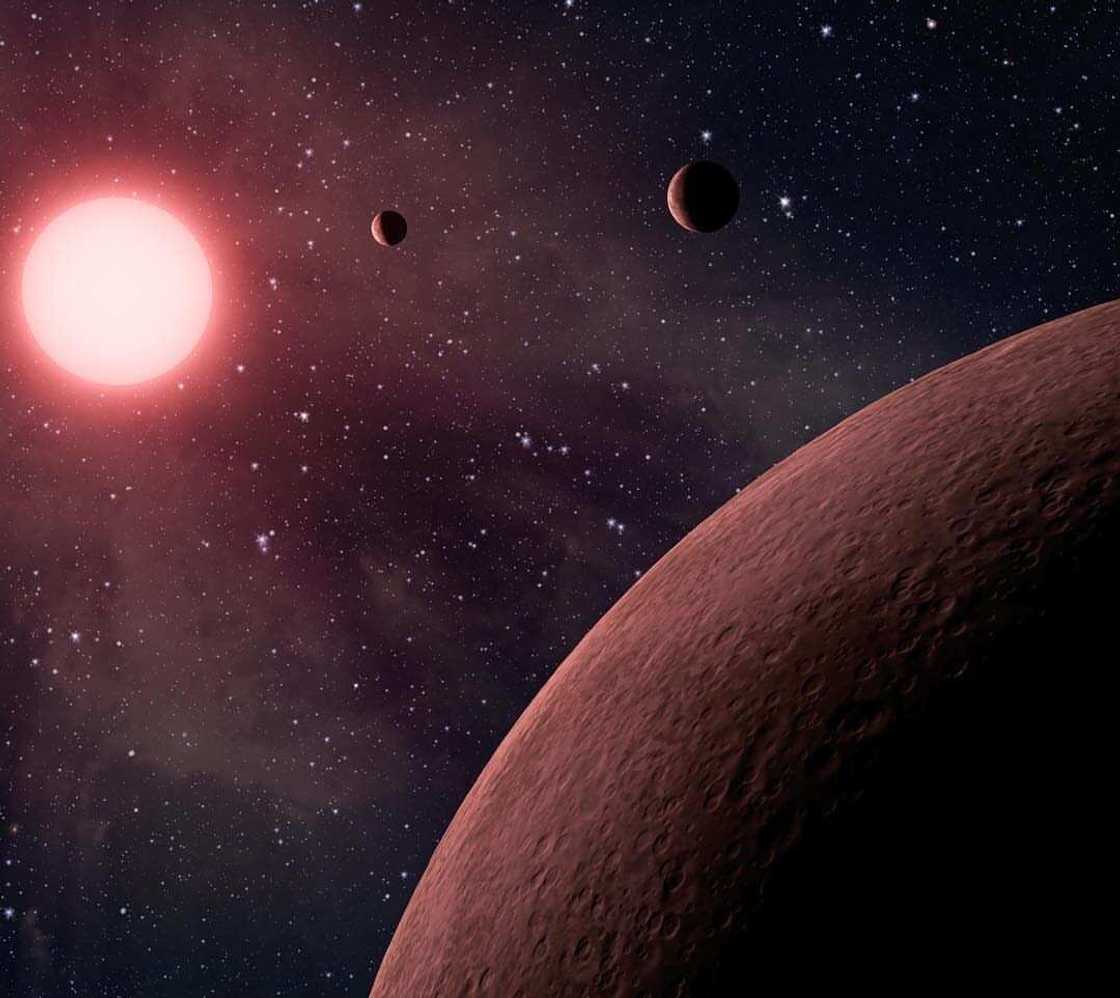
Source: UGC
The continued search for a habitable planet outside our solar system is fascinating. While scientists have discovered thousands of celestial bodies out there, there is still no conclusive proof of life outside Earth. Recent advancements in technology could lead to breakthroughs in the search for life outside our planet. Until such a time, we only have information regarding potential habitability.
READ ALSO: Solar energy advantages and disadvantages
Source: Legit.ng


